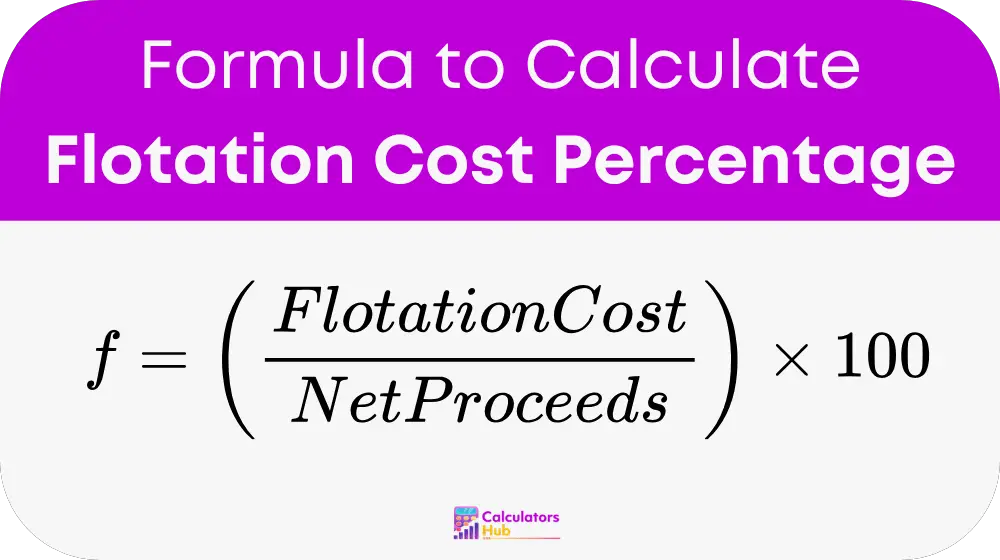The Flotation Cost Percentage Calculator helps businesses and financial analysts determine the percentage cost associated with raising new capital through equity or debt issuance. When a company issues new securities, it incurs expenses such as underwriting fees, legal services, regulatory filing costs, and marketing. These are collectively known as flotation costs.
This calculator provides a quick way to calculate the flotation cost as a percentage of the net proceeds received by the company. Understanding this percentage is essential for making accurate cost of capital estimates, evaluating investment returns, and adjusting project feasibility models in corporate finance.
The calculator belongs to the corporate finance and capital budgeting calculator category. It supports financial decision-making during fundraising and capital structure planning.
formula of Flotation Cost Percentage Calculator

Where:
- Flotation Cost = Total cost of issuing new securities (in dollars or currency units)
- Net Proceeds = Amount the company actually receives after deducting flotation costs from gross proceeds
If the gross proceeds are known, you can calculate net proceeds as:
Net Proceeds = Gross Proceeds − Flotation Cost
The flotation cost percentage represents how much of the raised capital is consumed by issuance-related expenses.
Helpful Reference Table: Typical Flotation Costs by Instrument Type
This table provides estimated flotation cost percentages based on the type of financing used. These are general industry averages and may vary depending on market conditions and company size.
| Financing Method | Typical Flotation Cost (%) | Description |
|---|---|---|
| Common Equity | 6% – 8% | Higher costs due to underwriting and risk |
| Preferred Stock | 4% – 6% | Slightly lower than common equity |
| Corporate Bonds | 1% – 3% | Lower costs due to lower marketing and legal fees |
| Convertible Securities | 2% – 4% | Moderate cost, includes both debt and equity traits |
| Private Placement | 0.5% – 1.5% | Minimal costs, limited regulatory compliance |
Use this table to set expectations when estimating flotation costs during capital raising exercises.
Example of Flotation Cost Percentage Calculator
Let’s say a company issues $5,000,000 in new common equity and incurs flotation costs of $350,000.
Step 1: Calculate net proceeds
Net Proceeds = $5,000,000 − $350,000 = $4,650,000
Step 2: Apply the formula
Flotation Cost Percentage = ($350,000 / $4,650,000) × 100
Flotation Cost Percentage ≈ 7.53%
So, the flotation cost is about 7.53% of the funds the company actually receives.
This value can be used to adjust cost of equity in weighted average cost of capital (WACC) calculations or when assessing the true financial impact of funding a project.
Most Common FAQs
Flotation costs reduce the net capital a firm receives. If ignored, companies might underestimate their actual cost of capital and overestimate project profitability or feasibility.
Yes, but the percentage can vary widely. Larger firms often have lower flotation costs due to economies of scale, while smaller or riskier firms may face higher fees.
In many jurisdictions, flotation costs are treated as capital expenditures and are not directly tax-deductible. However, they may affect long-term tax planning through asset depreciation or cost of capital adjustments.